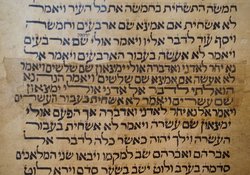Bio
Hebrew Heritage Foundation is committed to the recognition of Hebrew persons buried in Michigan or with family in Michigan.
It is an ancient Jewish custom to erect a Matzeivah / מצבה — gravestone in memory and in honor of the deceased, as we find in the Book of Genesis 35:20: "And Jacob placed a monument upon her grave: that is the monument of Rachel's grave unto this very day / ויצב יעקב מצבה על קברתה, הוא מצבת קברת רחל עד היום". The monument is also called Tziyun / ציון — a marker (II Kings 23:17).
Tombstone inscriptions. Ashkenazim engrave the Jewish name of the deceased and his or her father's name on the gravestone, but the prevalent custom among Sephardim is to write the Jewish name of the deceased and his or her mother's name instead. Some only write the Jewish name of the deceased and the family name. The date of passing that is engraved on the monument should be the Jewish calendar date, not the civil calendar date. Any additional inscriptions of praise for the deceased may follow in Hebrew or in the vernacular, but one should not write excessive praises on the monument. Some cemeteries, in particular in Jerusalem, Israel, permit Hebrew inscriptions only on the tombstones.
The custom is to start the inscription with the Hebrew acronym פ"נ, which stands for "Here is buried / פה נקבר, פה נטמן", and to end it with another acronym תנצבה, which stands for "May his/her soul be bound in the bundle of life / תהיה נפשו/נפשה צרורה בצרור החיים". This phrase is based on the verse in the Book of Samuel I 25:29"May my master's soul be bound in the bundle of life with the Lord your God / והיתה נפש אדני צרורה בצרור החיים את ה' אלהיך".
Hebrew Heritage Foundation is committed to the recognition of Hebrew persons buried in Michigan or with family in Michigan.
It is an ancient Jewish custom to erect a Matzeivah / מצבה — gravestone in memory and in honor of the deceased, as we find in the Book of Genesis 35:20: "And Jacob placed a monument upon her grave: that is the monument of Rachel's grave unto this very day / ויצב יעקב מצבה על קברתה, הוא מצבת קברת רחל עד היום". The monument is also called Tziyun / ציון — a marker (II Kings 23:17).
Tombstone inscriptions. Ashkenazim engrave the Jewish name of the deceased and his or her father's name on the gravestone, but the prevalent custom among Sephardim is to write the Jewish name of the deceased and his or her mother's name instead. Some only write the Jewish name of the deceased and the family name. The date of passing that is engraved on the monument should be the Jewish calendar date, not the civil calendar date. Any additional inscriptions of praise for the deceased may follow in Hebrew or in the vernacular, but one should not write excessive praises on the monument. Some cemeteries, in particular in Jerusalem, Israel, permit Hebrew inscriptions only on the tombstones.
The custom is to start the inscription with the Hebrew acronym פ"נ, which stands for "Here is buried / פה נקבר, פה נטמן", and to end it with another acronym תנצבה, which stands for "May his/her soul be bound in the bundle of life / תהיה נפשו/נפשה צרורה בצרור החיים". This phrase is based on the verse in the Book of Samuel I 25:29"May my master's soul be bound in the bundle of life with the Lord your God / והיתה נפש אדני צרורה בצרור החיים את ה' אלהיך".
Following
No Find a Grave members followed yet.
Contributions
- Memorials Added
- Memorials Managed
- Photos Added
- Flowers Added
- Virtual Cemeteries
- 13 Fame Ratings
- Followers
Advertisement
Adat Eytz Chayim (GR)
5 Memorials
Ahavas Achim (GR) Rabbis
2 Memorials
Ahavas Israel (GR) Rabbis
3 Memorials

